
Related
Guests
- Kathleen Belewassistant professor of history at the University of Chicago. Her new book is titled Bring the War Home: The White Power Movement and Paramilitary America.
Nearly one year since hundreds of torch-bearing white supremacists held a deadly march and rally in Charlottesville, Virginia, Homeland Security Secretary Kirstjen Nielsen has reiterated Trump’s defense of the violent white supremacists, saying, “I think what’s important about that conversation is, it’s not that one side is right, one side is wrong. Anybody that is advocating violence, we need to work to mitigate.” Organizers from Unite the Right, the group that held the rally in Charlottesville, have announced they will hold a repeat rally on the anniversary of last year’s deadly event, with plans to descend on Washington, D.C. For more on white supremacist violence in the United States, we speak with Kathleen Belew, assistant professor of history at the University of Chicago. Her new book is titled “Bring the War Home: The White Power Movement and Paramilitary America.”
Transcript
AMY GOODMAN: This is Democracy Now!, democracynow.org, The War and Peace Report. I’m Amy Goodman, with Juan González.
JUAN GONZÁLEZ: Well, it’s been almost a year since hundreds of torch-bearing white supremacists held a march on the campus of the University of Virginia, chanting “blood and soil” and “Jews will not replace us.” The next day, members of the group attacked counterprotesters, firing at least one shot from a pistol, and brutally beating 20-year-old Deandre Harris in a parking garage, before a neo-Nazi named James Alex Fields drove his car into a crowd of demonstrators, murdering a local paralegal named Heather Heyer and injuring at least 19 others.
In the aftermath of the tragedy, Donald Trump spoke at a bellicose, angry news conference he held in the lobby of his residence at Trump Tower, defending his decision to wait two full days before placing blame on white supremacists for the deadly violence in Charlottesville. During the news conference, the president attacked the anti-racist counterprotesters, repeating his earlier claim that there was violence on both sides.
REPORTER 1: You said there was hatred, there was violence on both sides. Are the counterprotesters to blame—
PRESIDENT DONALD TRUMP: Well, I do think there’s blame—yes, I think there’s blame on both sides. You look at—you look at both sides, I think there’s blame on both sides. And I have no doubt about it, and you don’t have any doubt about it, either. And—and—
REPORTER 1: But only the Nazis—
PRESIDENT DONALD TRUMP: And—and if you reported it accurately, you would say.
REPORTER 2: One side killed a person. Heather Heyer died—
REPORTER 1: The neo-Nazis started this. They showed up in Charlottesville. They showed up in Charlottesville—
PRESIDENT DONALD TRUMP: Excuse me. Excuse me.
REPORTER 1: —to protest the removal of that statue.
PRESIDENT DONALD TRUMP: They didn’t put themselves down as neo—and you had some very bad people in that group. But you also had people that were very fine people, on both sides.
AMY GOODMAN: Just last week, Homeland Security Secretary Kirstjen Nielsen backed Trump’s defense of the violent white supremacists who counter-attacked protesters in Charlottesville, Virginia, last August. Nielsen made the remark at a forum organized by the Aspen Institute.
HOMELAND SECURITY SECRETARY KIRSTJEN NIELSEN: I think what’s important about that conversation is, it’s not that one side is right, one side is wrong. Anybody that is advocating violence, we need to work to mitigate.
AMY GOODMAN: In a few short weeks, organizers from Unite the Right, the group that held the rally in Charlottesville, plan to descend on Washington, D.C., for the anniversary of last year’s event. Organizer Jason Kessler listed the event’s purpose as, quote, “Protesting civil rights abuse in Charlottesville, Va / white civil rights rally.”
Well, in a new book, our next guest traces the history of the white power movement, which she says organized around a worldview of white supremacy, anti-communism and apocalypse in the aftermath of the Vietnam War, and culminated in the 1995 bombing by Timothy McVeigh of the Alfred P. Murrah Federal Building in Oklahoma City. Kathleen Belew is an assistant professor of history at the University of Chicago. Her new book is titled Bring the War Home: The White Power Movement and Paramilitary America.
Welcome to Democracy Now!
KATHLEEN BELEW: Thank you for having me.
AMY GOODMAN: It’s great to have you with us. Congratulations on your book. Can you first comment on your thoughts on what Kirstjen Nielsen said, once again sort of reinforcing what Trump said a year ago, trying to take blame off of the white supremacists, and then put it into a broader historical context?
KATHLEEN BELEW: Yes. I should first mention that my research really goes only up to 1995 and the Oklahoma City bombing. And because I take an archival approach to this subject, I don’t have the archives to fully explicate what’s going on in the present moment. But I can say this: The archive shows us two important things about understanding the political context of Charlottesville and its aftermath. The first is that there are a lot of misconceptions about the white power movement, but we should understand it as a fundamentally violent movement that has always matched public activism, like we saw in Charlottesville, with violent underground activity.
The second thing is that although it seems new to us to have a moment of sort of a wink and a nod of allowing this kind of activism in the public sphere, actually it’s not new. This is a movement that radicalized under the Reagan administration. It turned violent against the state in 1983 at a moment of executive—sort of executive acceptance. And because of that, we shouldn’t think that the wink and the nod coming from the Trump administration might mean that these activists will be content with simply demonstrating in the public square.
JUAN GONZÁLEZ: Well, Professor, I wanted to ask you—you talk about this movement as really beginning to form and organize itself post-Vietnam. But how would you classify those right-wing or white supremacist movements that really developed in the '50s, during the civil rights movement, all the bombings that occurred throughout the South? I'm thinking specifically in ’62, the huge riot in Oxford, Mississippi, where there were actually pitched gun battles between federal marshals and white supremacists attempting to prevent James Meredith from entering Ole Miss. Could you talk about the relationship between that prior ’50s movement to then what developed during the Vietnam War era?
KATHLEEN BELEW: Sure. What we see in the 1950s is the third era of the Ku Klux Klan. People think about the post-Civil War Klan, the 1920s and then the 1950s. And it is classically organized in the way that many people understand Klan violence. The third Klan is mostly in the South. It is mostly anti-black. It is mostly oriented against what they say is the intrusion of the federal government into the battles against integration in the South.
What I’m looking at is a more ideologically diverse movement in the 1980s that brought together people who had been in the third Klan with a whole bunch of other people. So what I’m looking at is the unification of Klansmen, neo-Nazis, radical tax protesters, people who follow white supremacist theologies, and later skinheads into a cohesive movement, organized around the story of the Vietnam War. The important thing about that organization is that it is—it’s different in character from the third Klan, in that it is organized through a model of leaderless resistance, meaning what we now think of as cell-style terrorism. The idea is that you can organize a smaller number of activists in cells, such that they can’t be infiltrated or effectively prosecuted.
JUAN GONZÁLEZ: And would the bible of that then be The Turner Diaries or…?
KATHLEEN BELEW: Yes, absolutely. The Turner Diaries is a utopian novel that’s published in serial in 1974 and then comes out in paperback a few years later, that lays out how a strategy like this could work to take on the highly militarized superstate that is the United States in the late 1980s and ’90s.
AMY GOODMAN: Professor Belew, you write about this pivotal event in 1979, the shooting of communist protesters in Greensboro, North Carolina, that unified paramilitary and white power movement activists. Can you explain what happened then?
KATHLEEN BELEW: Yes. This is an event that happened in Greensboro in which a group of neo-Nazis and Klansmen came together under the name United Racist Front, drove to an anti-Klan demonstration that had been organized by a leftist group and some other activists in the area, and opened fire on protesters. They killed four people—excuse me, five people—four white men and one African-American woman. And even though this entire event was caught on multiple angles of news cameras who were on the scene, all of the gunmen were acquitted in state and federal trials, and a civil trial a few years later returned a decision that only one of the deaths had been wrongful. So the Greensboro massacre really gives us a historical cognate for Charlottesville, in that we see a unified group of neo-Nazis and Klansmen, and they are naming themselves as a unified movement, the United Racist Front. They’re coming to a public altercation, and violence ensues in the confrontation.
In the case of Greensboro, it also shows us a lot of things about how the American legal system was broadly unprepared to reckon with this kind of violence, because the gunmen were able to sort of effectively say that what they were doing was not racist, was anti-communist. The trials failed in part because of jury instructions that said to make conspiracy charges, to deprive someone of their civil rights for reasons of race—it didn’t work out because they were able to say it wasn’t about racism, it was about anti-communism. And this went as far as the defendants posing in front of the local Vietnam War Memorial to raise money for their defense. And the acquittals sort of gave the green light for further violence in this mode.
AMY GOODMAN: And the title of your book, Bring the War Home, why you chose it?
KATHLEEN BELEW: Sure. That actually comes from a essay from a collection written by Louis Beam, who is a Vietnam veteran who served two tours as a Huey helicopter gunner and then returned home in 1968 and became a leader in this movement. And that essay—it’s from an essay in a collection called Essays of a Klansman, which was published at the Aryan Nation’s compound in 1983 and then reissued in 1989. And in it, what Beam is talking about is the disconnect between the violence of warfare and the violence—or the violent experience of veterans when they come home. And his solution is to bring the violence of warfare into the domestic space.
He says, “Vietnam, bring it on home.” He wants this violence directed against all of the people that he thinks betrayed him and fellow soldiers in the Vietnam War. And within this ideology, that includes everyone from the federal government to the sympathetic media to others in the public sphere to civilians who seem unaware of what has happened. Beam went on to organize paramilitary training camps for Klansmen to be involved in the strategy of leaderless resistance and to bring the entire movement online in early computer message boards called Liberty Net, and then to mastermind sort of further violence within the movement.
AMY GOODMAN: We’re going to break and then come back to this discussion. We’re speaking with Kathleen Below, assistant professor of history at University of Chicago. Her new book, Bring the War Home: The White Power Movement and Paramilitary America. Stay with us.
[break]
AMY GOODMAN: “Enough Is Enough” by Chumbawamba, here on Democracy Now!, democracynow.org, The War and Peace Report. I’m Amy Goodman, with Juan González. Our guest is Kathleen Belew, assistant professor of history at University of Chicago. Her new book, Bring the War Home: The White Power Movement and Paramilitary America.
JUAN GONZÁLEZ: I’d like to ask you about the bombing—Timothy McVeigh and the bombing of the Oklahoma City Federal Building, and also about the Branch Davidian complex, the massacre and the standoff that occurred there—to what degree those incidents either galvanized or created problems for the formation of this right-wing supremacist movement.
KATHLEEN BELEW: So, the Branch Davidian complex at Waco was actually a multiracial religious community. It shared a lot in common with the white power movement in that both formations really focused on the apocalyptic and on the imminent end of the world and believed that their members would have to become foot soldiers in a sort of apocalyptic end of days that would take the shape of, for white power people, a race war, and for the Branch Davidians, a war against sort of everyone on the outside.
So, Waco is important to the white power movement because it is such a visible example of the overexertion of the state and the sort of overuse of state power. So what we’re talking about is the months-long siege of a compound that included men, women and children and that ended in a enormous fire, after several days of standoff, and then tanks rolling through the compound. All of that was on video. Similarly, the state had sort of used these methods of what we could think of as paramilitary policing on Ruby Ridge just a year or two earlier. But that was widely reported, but not televised in the same way, because it was so remote. So, Waco is important because it gives evidence to the ideology that people in this movement have believed for a long time, that the state is bent on their destruction.
Timothy McVeigh came to Waco to witness the siege and watched the end of the Waco siege with tears running down his face, according to some reports. So when he carried out the bombing, he chose the anniversary of the Waco siege for his action. But the date, April 19th, 1995, was important for a lot of other reasons, and that’s one of the ways that we can see why this bombing was the work of a movement and not just the work of a lone-wolf activist. The bombing was also scheduled for the anniversary of the raid of a prominent white separatist compound called the Covenant, the Sword and the Arm of the Lord, and was also on the execution date of one of its key activists, who had, in 1983, also targeted the Murrah building in a plot that never came to fruition. The white power movement had had that building in its sights for decades. McVeigh even stayed with a member of the Michigan militia who could draw the building from memory, he had thought so much about how one might carry out a bombing like McVeigh’s. And McVeigh read The Turner Diaries and carried and distributed that novel as part of his work on the gun show circuit, prior to carrying out the bombing.
So, what we see after the Oklahoma City bombing is a quick surge in copycat acts.
AMY GOODMAN: And, of course, Timothy McVeigh served in the Iraq War, in the Gulf War.
KATHLEEN BELEW: Yes, yes.
AMY GOODMAN: Before you move on, I did want to ask you very quickly about a very interesting chapter, “Mercenaries and Paramilitary Praxis,” about white supremacy and U.S. involvement in Latin America, particularly Central America, in places like Nicaragua.
KATHLEEN BELEW: Yes. So, one of the things that happens as people return from the Vietnam War is that some people choose to continue to use the skills they’ve learned for combat in other areas. There is a movement of mercenary soldiers to southern Africa, to Nicaragua and El Salvador, and occasionally to Honduras, in an effort to sort of undergird U.S. foreign policy in those areas.
And for the white power movement, it’s important because these sites become a place for people to sort of try out anti-democratic warfare before they bring those strategies home to the United States. It’s also a corrective to the historical record that has sort of—well, and to public discourse—that has sort of thought about these movements usually as sort of armchair warriors going off to do cultural battle. And we see a lot of people think about, you know, paintball courses or Soldier of Fortune magazine as these harmless methods of American cultural entertainment in the 1980s. But for a lot of people, this was a real thing, this was real combat, and it should be treated as it does. It has real body count.
AMY GOODMAN: Oliver North, now president of the NRA, responsible for getting weapons, selling weapons to Iran, and using that money illegally to fund the Contras in Nicaragua.
KATHLEEN BELEW: Yes. And many white power activists spent some time in Central America before coming back to carry out white power activism in the United States. There is one case of an attempt to invade the island of Dominica in the Caribbean to set up a puppet government for the Klan and funnel the money back to the United States. That one, the people involved got caught quite early. But others did go to countries in Central America and southern Africa to sort of practice guerrilla warfare methods before coming home. And we see this also in—The Turner Diaries was sold in bookstores in South Africa, for instance. So it really—they really were overlapping sort of areas of engagement.
JUAN GONZÁLEZ: And we only have about less than a minute left, but what’s the economic program of this movement, from what you can tell?
KATHLEEN BELEW: You know, it’s interesting. This movement is usually thought of in pop culture as being a lower-class movement or a Southern movement or having something to do with backwardness. Actually, it’s an incredibly broad movement. It’s in every region of the country. It included men, women and children, people with advanced degrees as well as high school dropouts, religious leaders as well as felons. I think what it shows us is that although this was a fringe movement, this really explains where overt racism went in a period that many Americans have thought of as colorblind on the right, or as multicultural or post-racial on the left. Overt racism was part of our politics the entire time.
AMY GOODMAN: And, Kathleen Belew, what surprised you most in your research?
KATHLEEN BELEW: You know, I was really surprised by the role of women in this movement, again, because we have these ideas of paramilitary culture as being hypermasculine. Actually, women were doing an incredibly important job in this movement in interconnecting groups, in marriages that maintained group alliances, in recruitment, and also in actual activism in their own right. Women worked disguising fellow members for violent action and may have even been involved in the writing of some key movement texts.
AMY GOODMAN: Well, I want to thank you so much for being with us. Kathleen Belew’s book is called Bring the War Home: The White Power Movement and Paramilitary America. She is an assistant professor of history at University of Chicago.

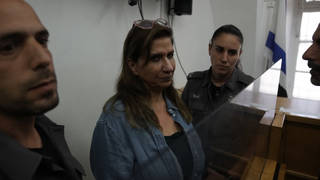
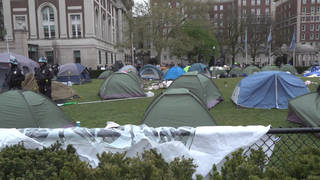
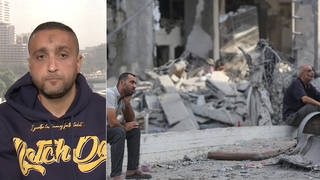
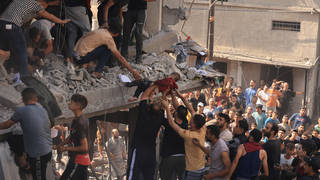





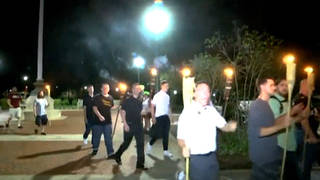

Media Options